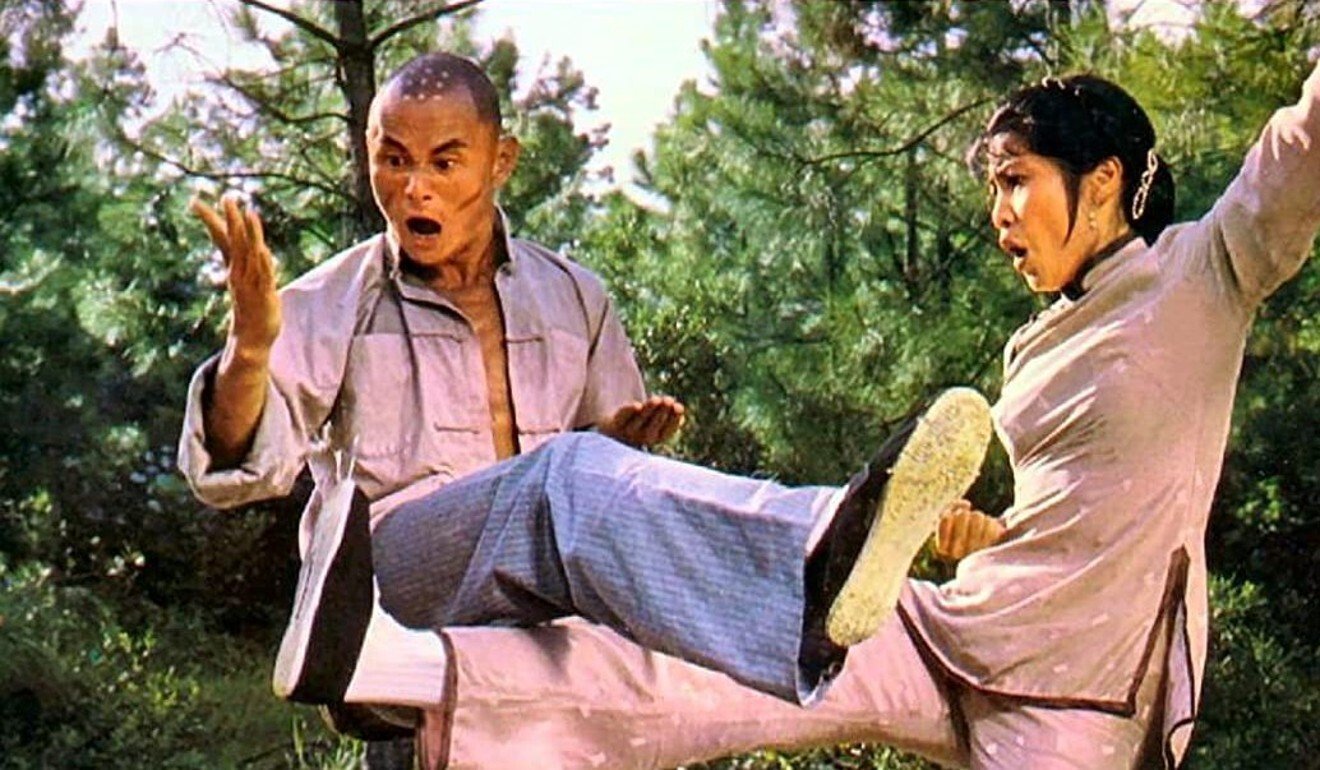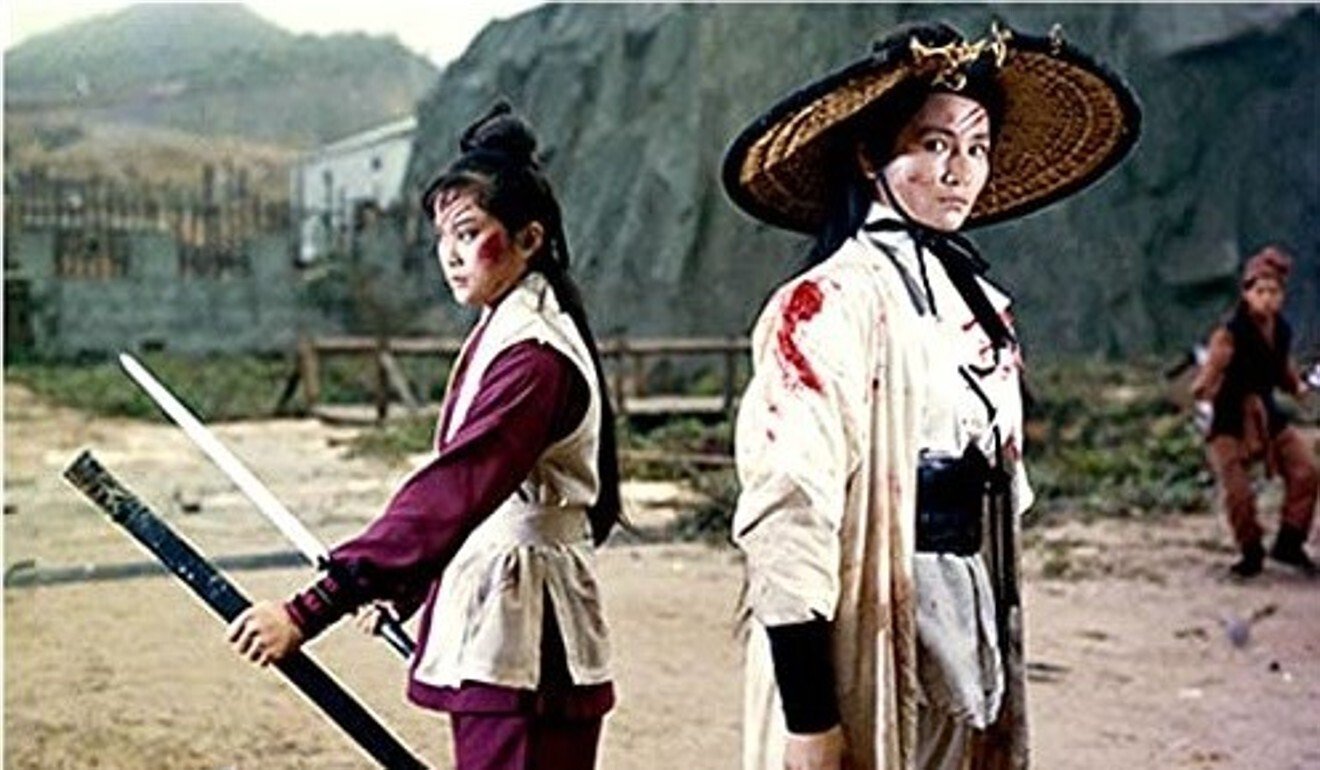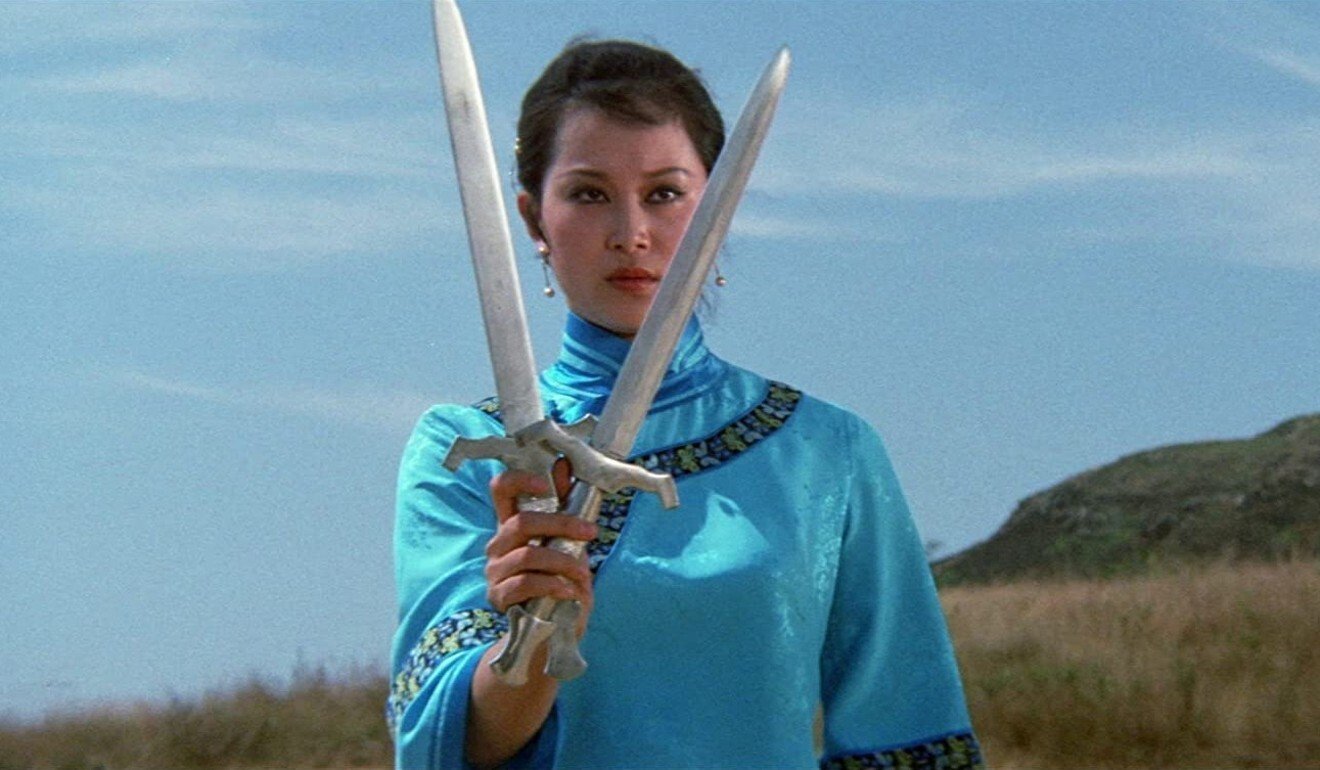
Martial arts actresses like Cheng Pei-pei and Angela Mao Ying have become legends. But they weren’t the only great female martial arts film stars of the 1970s. We recall two of the other great actresses of the era.
Lily Li Li-li
Shaw Brothers star Lily Li Li-li has had a long and venerable career – she only gave up acting this year, when she decided not to renew her contract with TVB because she felt that it was time to retire. Li was a constant presence in the Shaw Brothers films of the 1970s, playing martial arts roles, and also female lead and supporting roles in which she was not called upon to fight.
A veteran of some 106 movies, she is best known for her appearances opposite David Chiang Da-wei in Chang Cheh’s , the 1970 film which made her a star and established her as an action heroine, and in Lau Kar-leung’s classic 1977 , in which she had a key role as Fung Yung-chan, the wife of legendary martial artist Hong Xiguan.
“Her appearance in Executioners from Shaolin bore witness to a depth and sensitivity rare among actresses in Hong Kong cinema,” wrote a local critic in 1980. Li also played many notable supporting roles.
Hong Kong-born Li joined the Acting Training Course at Shaw Brothers at the age of 14, and signed a contract with the company in 1965. Her first important role was in Yue Feng’s The Dragon Creek (1967), a drama with some action which starred Cheng Pei-pei.
After her starring role in The Wandering Swordsman in 1970, Li mainly appeared in martial arts films, although she was not always called on to demonstrate her impressive fighting skills in movies like Challenge of the Masters.
Li’s versatility and expressiveness made her a popular choice for leading ladies of all stripes, ranging from the “love interest” to an ageing matriarch in Lau Kar-leung’s The Eight Diagram Pole Fighter.
Although her natural home was in martial arts, she ventured into many other genres, such as horror in Black Magic and erotica in Crazy Love, a titillating film in which she was not afraid to go topless.

Li could handle a sword, but she focused more on unarmed combat, and later trained with Lau Kar-leung. One of her most memorable scenes is in Executioners from Shaolin, in which she uses her kung fu skills to clench her legs on her wedding night so that her new husband Hong Xiguan (Chen Kuan-tai) can’t consummate the marriage.
The scene was later referred to in Disciples of the 36th Chamber, when she challenges a villain played by Lau Kar-leung to unclench her legs in a combat situation. Li later said in an interview that she had learnt that position as part of her wing chun kung fu training.
Li’s kung fu was precise and controlled, as demonstrated in her elegant performance in 8 Daggers, in which she played a martial arts sifu. Loot, in which she is a villainess, features one of her best combat scenes.
Shih Szu
The lithe and energetic Shih Szu was the biggest female martial arts star at Shaw Brothers in the early 1970s. Shih, who made her first films when she was just 16 years old, became a star when she played opposite Cheng Pei-pei – the martial arts queen whom she was being groomed to replace – in the hit Lady Hermit in 1971.
She went on to take action-packed roles in films such as The Young Avenger before being sidelined – perhaps due to an arm injury – in the mid-1970s, when she was pushed into minor roles at Shaw.
Shih made something of a comeback in the late 1970s, when she started to work outside the Shaw production system on films like Massacre Survivor. In 1980, after her contract with the studio expired, she returned to her native Taiwan, and became a star all over again, in popular television martial arts series such as Flying Swallow, Surprised Dragon.
The actress has a very recognisable martial arts style. She is long-limbed and fights very wide, using the full length of her legs and arms to attack with force.
She is not an elegant fighter like Angela Mao, but she is very powerful, and looks like she would be able to defend herself in a barroom brawl. Shih is at her best when fighting with weapons, but she did also fight in unarmed combat scenes.
According to an interview with the Post in 1971, Shih got her job at Shaw in 1968 after answering an advertisement in a newspaper for an open audition – she beat out 3,000 other hopefuls. She moved from Taiwan into the Shaw Brothers dormitory, with her mother accompanying her, for acting tuition and martial arts training.
Shih had trained in dance since she was six, studying folk dance and ballet, and she had won the All Taiwan Dance Contest in 1967. Her expertise in dance enabled her to quickly understand martial arts choreography.
Her rise to fame was “meteoric” according to her SCMP interviewer. “I love the profession, and love getting the chance to star in film. If I’m good enough, I’ll keep making films that people enjoy,” she told the Post in 1971.

Shih’s best film is probably 1971’s Lady Hermit. This underrated martial arts film is perhaps unique in that it focuses on the relationship between a female martial arts student – played by Shih – and a female sifu, played by Cheng Pei-pei.
Shih has a supporting role, but she has some solo fight scenes which demonstrate her skills, notably a battle in which she decimates a horde of villains and then climbs to the top of a pagoda.
Other notable action scenes appear in The Young Avenger, in which she again shows her refined swordfighting skills; Heroes of Sung, in which she impresses with twin short swords; and a segment of the portmanteau film Trilogy of Swordsmanship, in which she wields a spear.
The later 1979 entry Massacre Survivor saw her back on top form, although by then her action scenes had become more dance-like than aggressive, something which continued into her TV work in Taiwan.

Shih, who is reportedly now a devout Buddhist, also appeared in the disastrous Hammer Films/Shaw Bros co-production (1973). Although she fights, Shih is cast as a stereotypical quiet and subservient Chinese woman. She falls in love with a Western hero who is called on to save her – even though her combat skills are far superior to his.
In this regular feature series on the best of Hong Kong martial arts cinema, we examine the legacy of classic films, re-evaluate the careers of its greatest stars, and revisit some of the lesser-known aspects of the beloved genre. Read .
Want more articles like this? Follow SCMP Film on Facebook
From our archive







